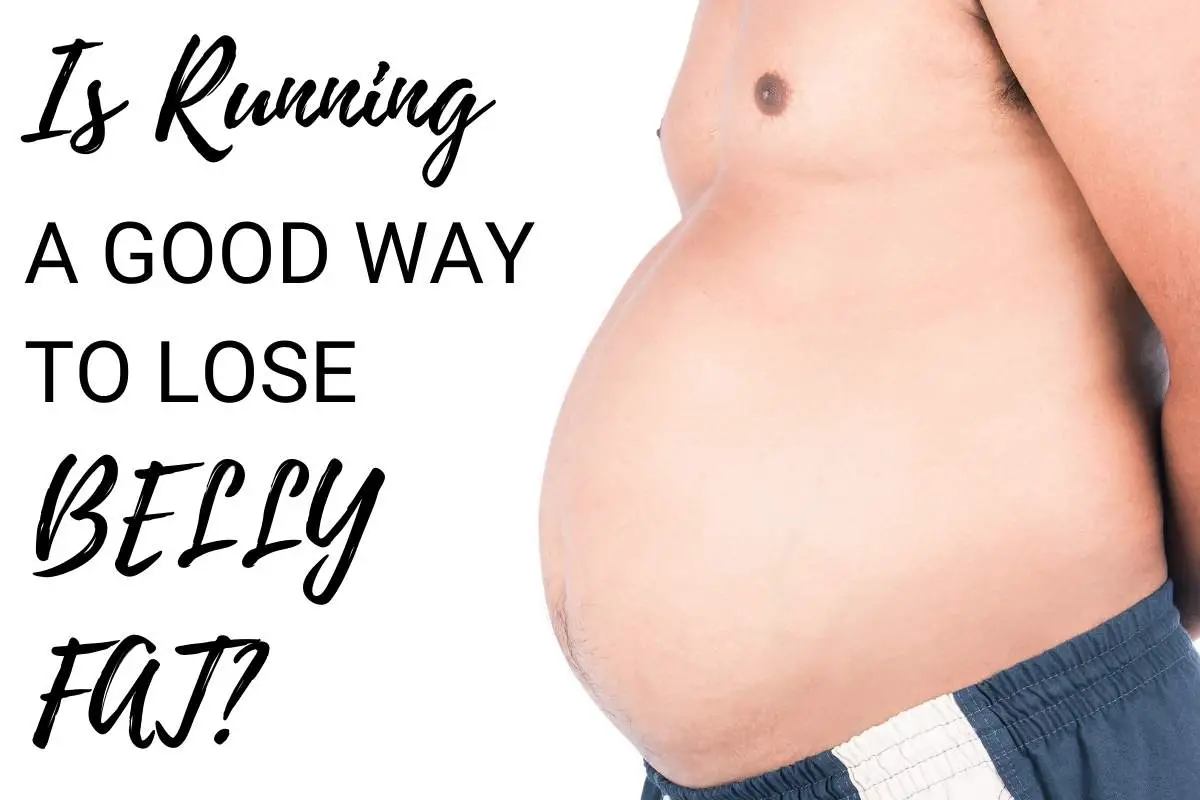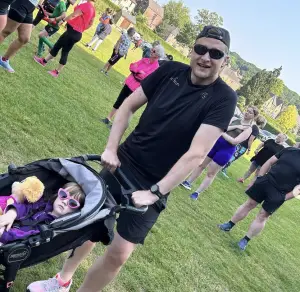As someone who has lost nearly two stone through running, I feel it’s worth sharing my thoughts on how effective this exercise is at losing weight, especially around your belly.
Running can be a great form of exercise to burn overall body fat that will help to reduce belly fat. It must be undertaken in partnership with a controlled diet to ensure your burn more calories than you consume.
I’ve learnt this the hard way over the years. When I trained for a marathon, I was running over 60km a week. I couldn’t believe that the weight just wasn’t falling off. It got to the point of frustration, so I had to investigate further.
There is an excellent reason for this, but it is worth understanding the science just a little bit which I promise will help you tremendously to make some progress if you’re getting a little demotivated like I was.
Types of belly fat
First bit of science, and you might not know this, but there are two types of body fat, visceral and subcutaneous.
Why is that important? Well, visceral fat is found around the organs inside your abdominal cavity and is the fat that doctors are most concerned with. Visceral fat is also linked to health problems such as type 2 diabetes. Harvard University has also linked it to breast cancer and the need for gallbladder surgery in women.
Subcutaneous fat is found just underneath our skin. You know that bit that you can grab around your belly, yup that’s this one. This fat is less harmful to our health, but can wriggle the most!
How is fat burned off
As I have discovered on my weight loss journey, not all fat burns off equally. In a rather annoying twist of nature, the fat comes off in the order in went on. For me, It was that long ago that the fat went on that I couldn’t remember!
Second bit of science. A study in 2017 found that subcutaneous fat loss occurs more than visceral fat loss. So basically the squishy bits around your outsides are lost first. It also found no strategies that targeted visceral fat loss, remember this is the bad fat.
So there are no short cuts here sadly, your belly fat might come off first, but it also might be one one of the last things. The critical thing is to be consistent, and the results will come.
Running to burn fat off.
Running is one of the best forms of exercise you can do to burn body fat. However understanding the two different types of exercise, aerobic and anaerobic is also important here.
These two differ in how your body produces energy for the running.
Aerobic exercise uses oxygen to create energy. Your body used carbohydrates and fats to give you the energy. This can only be done when your body can take in enough oxygen.
In terms of running, this means you can run at a slower, more moderate pace where you never get out of breath but stay in a zone where your body is using the carbohydrates and (most importantly)fat to create the energy.
If you’re considering getting into running for the first time with a view to reducing overall body fat levels, there is a great form of exercise to start with.
Anaerobic exercise where energy is created without oxygen, but from blood glucose or glucose stored in your muscles. This is the kind of energy you need for quick bursts of speed, but it comes in very limited supply.
For this reason, it would seem it is less than ideal for our objective of burning fat, but that isn’t the whole story. Anaerobic exercise is very good at burning fat because it increases your metabolism. As a bonus this extra metabolism lasts for 24 hours after your exercise!
Aerobic exercise burns fewer calories and therefore fat at the rate at which you run, so while it can be good for building up your stamina when starting to run for the first time, you should also consider anaerobic exercise.
There are plenty of good running training plans out there that use a combination of both types of exercise, particularly those that are designed for people just starting out. We have some examples on our resource page.
This is not the whole story, however. So before you rush off and jump into a running program, it’s really important to consider the effect of your diet on this process.
The importance of a good diet
If you are going to start a running routine to lose belly fat that I suggest you must start recording what you eat. If you’re anything like me, then you find it difficult with consistently keeping up with something.
I have found that when I consistently run and also record and manage what I eat, then I’ve seen weight loss results and my belly got a little bit smaller.
The most success I’ve had is using an app called MyFitnessPal. What’s great about this app is I can record what I eat, but it also pulls through all running calories from my Garmin Connect account.
Tracking calories in MyFitnessPal allows me to see my day in an easy to understand dashboard that helps to keep me on track.
Using this app, I can set what my target calories are for the day. Where I often went wrong was not tracking my food. I would go for a long run (say10k) but come back and then consume far more than I have burned off!
You may have heard the phrase “You can’t outrun a bad diet”. This essentially means that you can’t exert more calories than you’re consuming through poor diet choices. Yes, we’ve all reached for the Ben and Jerries at one point or another, but doing so regularly is likely to hinder your efforts to lose that belly fat.
However, one study suggests that it is possible to outrun a poor diet, but that people tend not to commit the time or effort to expend the required calories (for that tub of Ben and Jerries).
It comes down to simple maths; everyone has a basal metabolic rate (BMR); this will be unique to you. This is the number of calories your body burns in a day without moving.
There are a number of different formulas for calculating this, and it has evolved over the years, but this is your starting point. Use this online calculator to work out yours.
In order to lose weight, your final calorie intake each day needs to be LESS than this number. So record all of the calories you eat, take away any exercise calories and make sure that the final number is lower than your BMR.
One final caveat with MyFitnessPal. I would actually recommend linking it properly with your fitness tracker app (mine happens to be Garmin Connect). I found that my Garmin watch was adding additional active calories through general daily activity like moving around and so the total calories I could eat was slightly higher.
Worth knowing, best of luck with your belly fat loss journey!!
References
Predicting basal metabolic rate, new standards and review of previous work.


